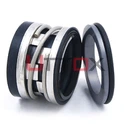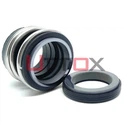1. Check whether the model and specifications of the mechanical seal to be installed are correct.
2. Check whether the dimensional accuracy, geometric accuracy and mutual relationship of the installation related parts of the host and the mechanical seal meet the technical requirements. There are mainly the following aspects:
(1) The radial runout tolerance of the shaft (or sleeve) where the mechanical seal is installed, the surface finish and outer diameter tolerance of the shaft (or sleeve).
(2) Tolerance of the verticality of the centerline of the shaft (or sleeve) in combination with the positioning end of the sealing cavity and the gland.
(3) The chamfer and smoothness of the end of the shaft (or sleeve) where the moving ring seal is installed, and the end of the housing hole where the mechanical seal is installed.
(4) The axial displacement of the rotating shaft of the mechanical seal when it is working.
3. In the process of installing the mechanical seal, keep it clean, and it is not allowed to knock the sealing element with tools to prevent damage and destruction.
4. When installing, the surface of the moving and static rings should be coated with a layer of clean engine oil and turbine oil. The auxiliary sealing ring (including the moving ring sealing ring and the static ring sealing ring) should also be coated with a layer of clean engine oil or turbine oil before installation to ensure smooth installation.
5. After putting the static ring seal ring on the back of the static ring, install it into the sealing end cover. Take care not to damage the end face of the static ring. Make sure that the end face of the static ring is perpendicular to the center line of the end cover. Pay attention to the anti-rotation groove on the back of the static ring. Align the anti-rotation pins, but not touch them.
6. The rotating part of the mechanical seal is fixed to the shaft by the two fixing screws on the spring seat. When tightening the fixing screws, the working length of the spring must be ensured.







